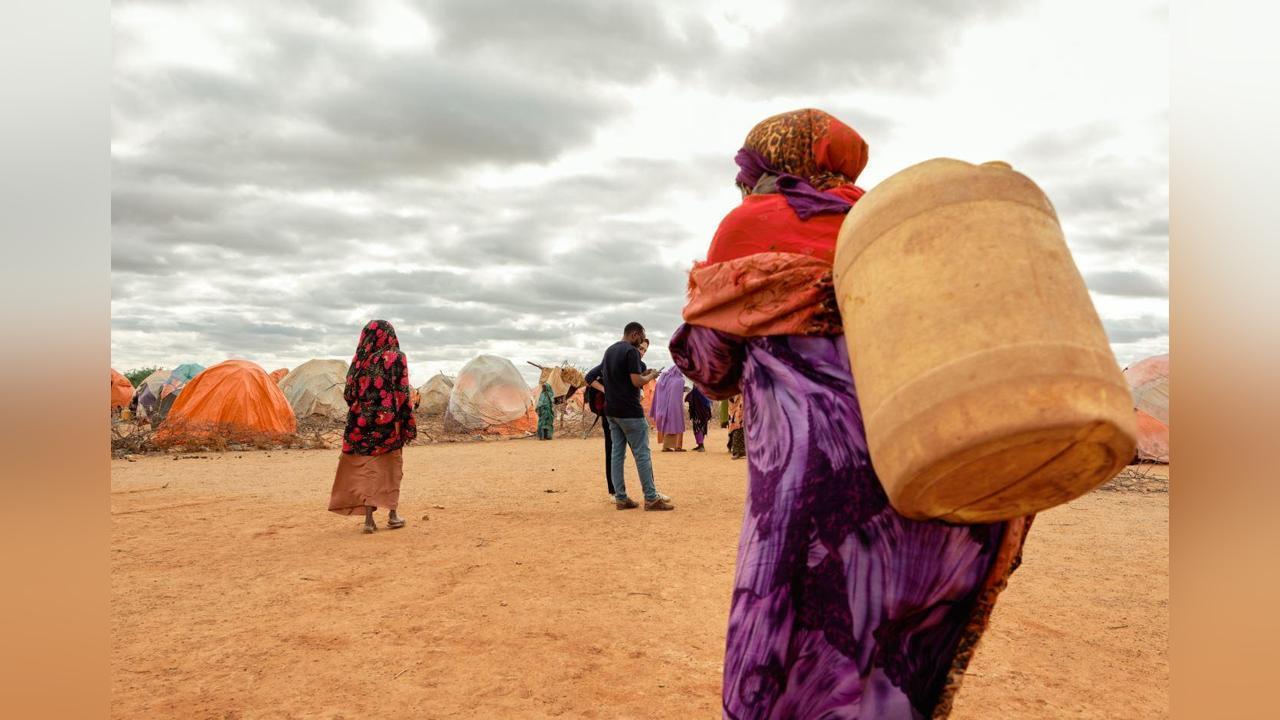Africa-Press – Mauritius. Up to 2.8 billion people could be exposed to heatwaves by 2090 under a high-warming scenario, more than double that in a low-warming scenario, according to new analysis from the International Organization for Migration’s (IOM) Global Data Institute (GDI).
While the ability to foresee the effects of climate change on population movements worldwide remains limited, almost half of the people potentially affected by heatwaves (up to 1.3 billion) are projected to live in Southern Asia, a region that has witnessed 59.7 million climate-related displacements in the past decade according to the Internal Displacement Monitoring Centre.
The low and high warming scenarios represent different future trajectories in greenhouse gas concentrations, leading to a global temperature rise of likely below 2°C and of 3–4°C by 2100, respectively.
The GDI examines the relationship between climate hazards, population density and socio-economic vulnerability of communities worldwide. These variables show the level of human exposure to climate hazards in the new Climate Mobility Impacts dashboard, an open-access interactive tool launched today on the Migration Data Portal.
This chart shows the possible number of people exposed to heatwaves worldwide between 2030 and 2090. “In the past decade, over 200 million people have been displaced by floods, storms, and wildfires,” said Koko Warner, IOM GDI Director.
“Understanding how climate change will affect when and where these impacts will occur is crucial for delivering effective anticipatory action and solutions.
As 2023 marks yet another hottest year on record, the impacts of climate change are increasingly visible on communities from the Horn of Africa to the Pacific Islands.
The new tool identifies locations where hazard exposure, high population density, and economic vulnerability are projected to coincide in the future. These data provide granular insights into where to prioritize forward-looking and proactive support measures for communities at risk of climate-related displacement.
In addition to heatwaves, other risks people face include river floods, drought, crop failure, wildfire, and tropical cyclones. The dashboard shows that, by 2090, global warming is projected to expose up to 39 million people to river floods under a high warming scenario, with Sub-Saharan Africa being the most affected region.
Climatic hazards are already a major driver of human mobility worldwide. Climate change is expected to increase their severity and frequency in many parts of the world.
While there is an increasingly precise understanding of where and when climate hazards will occur and how many people will be exposed to them, there is still little knowledge of how human mobility will respond to these hazards, as shown in a recent study on the various projections available.
“There is no consensus yet on how global human mobility will respond to the impacts of climate change,” said Robert Beyer, IOM GDI Data and Research Analyst.
“However, as data and models are improving, that consensus is more and more within reach. This is crucial for informing concrete action on the ground that minimizes the adverse impacts of climate change on human mobility.”
For More News And Analysis About Mauritius Follow Africa-Press







